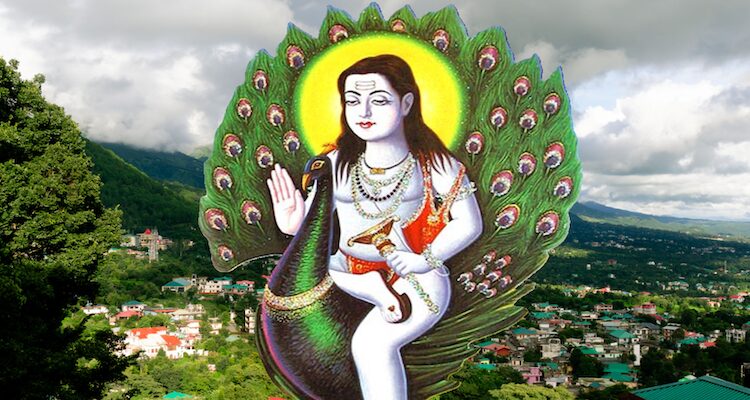Baba Balak Nath: Eternal Child Saint of the Himalayas and Guardian of Faith
Explore the legend of Baba Balak Nath, the eternal child saint revered as Lord Kartikeya’s incarnation. Discover his story, symbolism, Deotsidh temple traditions, and modern-day significance.
Introduction: A Child Saint Who Captured the Hearts of Millions
High in the pine-clad mountains of Himachal Pradesh, where mist drapes valleys like a silver veil, a story has lived for centuries. It is the story of Baba Balak Nath, the child saint believed to be an incarnation of Lord Kartikeya the son of Shiva and Parvati. But unlike Kartikeya the warrior, Baba Balak Nath chose a path of simplicity, meditation, and blessings for devotees.
Even today, thousands chant his name, walk barefoot to his shrine, and believe his blessings protect families, heal ailments, and bring prosperity. His legend is not just mythology it is a living current of faith that shapes northern India’s spiritual culture.
Context & Background: Mythology and Historical Roots
Lord Kartikeya’s Rebirth as Baba Balak Nath
According to Hindu tradition, Kartikeya, also known as Skanda or Murugan in the south, was the commander of the gods, famed for defeating demons with courage. After fulfilling his cosmic duty, he incarnated again—this time in the Himalayas—as Baba Balak Nath. Instead of wielding weapons, he took the role of a yogi, renouncing worldly desires and guiding devotees through wisdom and compassion.
Birth and Early Life
Legends narrate that Baba Balak Nath was born in Kathgarh, Punjab, to Pandit Narayan and Mata Ratno. From infancy, his divine qualities were unmistakable. Unlike other children, he showed little interest in play or material pleasures. Instead, he spent hours in meditation, chanting mantras, and reflecting on the eternal truth.
When he came of age, he renounced his family life, embarking on a spiritual journey that would eventually lead him to the caves of Deotsidh in Hamirpur, Himachal Pradesh.
The Story of Baba Balak Nath: From Wanderer to Divine Guardian
The Wandering Yogi
After leaving home, Baba Balak Nath wandered across villages, forests, and riversides. Everywhere he went, people felt a powerful aura of calm and kindness. Stories grew of his miracles healing the sick, bringing rain in drought, and guiding the lost. Yet, he never sought fame. Instead, he chose solitude, immersing himself in meditation.
The Cave of Deotsidh
His journey culminated at the sacred Deotsidh Cave, where he sat in deep tapasya (penance). This cave became his eternal home, symbolizing detachment from worldly life and union with the divine. Even today, devotees believe he resides spiritually within the cave, blessing those who come with faith.
Miraculous Tales
Numerous stories surround Baba Balak Nath’s divine powers:
-
The Shepherd’s Blessing: He once helped a poor shepherd by multiplying his cattle, symbolizing prosperity for those who worship him.
-
Healing Powers: Villagers narrate tales of incurable illnesses vanishing after prayers at his shrine.
-
Protection from Evil: Farmers often believe his blessings keep away natural disasters and misfortune.
Symbolism in the Legend of Baba Balak Nath
Every aspect of Baba Balak Nath’s story carries deep symbolic meaning:
-
Eternal Childhood: Remaining forever a child saint, he represents innocence, purity, and uncorrupted devotion.
-
The Cave: His residence in a cave signifies detachment and the inward journey of meditation.
-
The Trident (Trishul): A symbol of destroying ignorance, ego, and attachment.
-
Celibacy: His vow of brahmacharya represents supreme discipline and mastery over desire.
-
Compassion for the Poor: His miracles often favored the humble, highlighting humility as a spiritual virtue.
Deotsidh Temple: The Heart of Baba’s Legacy
The Sacred Cave Shrine
The Deotsidh Temple in Hamirpur, Himachal Pradesh, is the holiest pilgrimage site dedicated to Baba Balak Nath. Perched on a hilltop, the cave shrine is where Baba meditated, and devotees believe his spirit still resides there.
The temple complex includes:
-
The Cave Shrine: Entry for male devotees who perform darshan (viewing the idol).
-
Charan Paduka: A sacred stone said to bear Baba’s footprints, where women devotees pray.
-
Langar (Community Kitchen): Offering free meals to pilgrims, emphasizing equality and service.
Pilgrimage Traditions
-
Devotees often walk barefoot or climb steep paths as acts of devotion.
-
Offerings include goats, black grams (chana), and sweets, symbolizing humility and surrender.
-
The shrine is especially crowded during Chaitra Navratri (March–April), when lakhs gather in devotion.
Public Devotion: Faith Across Generations
Baba Balak Nath is revered not only in Himachal but also in Punjab, Haryana, Delhi, and parts of Uttar Pradesh. His followers span across caste, class, and regional boundaries. For farmers, he is a protector of crops. For families, he is a healer and guardian. For ascetics, he is a symbol of detachment and discipline.
Songs, folk tales, and devotional hymns popularly called Bhajans of Baba Balak Nath are sung in villages, narrating his miracles and blessings.
Expert Insight: Interpreting the Legend
Historians and religious scholars see Baba Balak Nath as a bridge between regional folk faiths and mainstream Hindu traditions.
-
Dr. Ramesh Sharma, a cultural historian, observes:
“The story of Baba Balak Nath shows how Himalayan spirituality absorbed Vedic deities like Kartikeya and localized them into accessible saints for the common people.” -
Spiritual teachers interpret his celibacy as a message for modern seekers—discipline and purity of thought are as important as rituals.
Impact and Modern-Day Relevance
Socio-Economic Impact
The temple of Deotsidh is not just a spiritual site but also a hub of local economy. Pilgrimages bring tourism, trade, and cultural vibrancy to Himachal Pradesh. Villages thrive during fairs and festivals, with handicrafts, local foods, and devotional items sold to pilgrims.
Digital Era Devotion
With the rise of technology, devotion has crossed geographical boundaries. Live darshan of Baba Balak Nath’s temple is streamed online, and social media platforms carry bhajans and stories of his miracles. This digital devotion connects the younger generation to ancient traditions.
Relevance in Daily Life
For modern followers, Baba Balak Nath symbolizes:
-
Hope in hardship for the poor.
-
Guidance in morality for the young.
-
Blessings for prosperity for families.
-
Spiritual discipline for seekers.
Festivals and Annual Fairs
Chaitra Mela (Spring Fair)
The most significant festival in Baba’s honor is held during Chaitra Navratri, drawing lakhs of devotees. The temple becomes a sea of faith, with rituals, music, and a vibrant bazaar.
Ritual Practices
-
Devotees light diyas (lamps) in the cave area.
-
Goat offerings are symbolic, representing surrender, though actual sacrifice is discouraged in modern practice.
-
Community meals emphasize equality, breaking caste and social barriers.
Tourism & Travel Guide: Visiting Deotsidh
-
Location: Hamirpur district, Himachal Pradesh, about 50 km from Hamirpur town.
-
Best Time to Visit: Chaitra Navratri (March–April) for grand celebrations, or winters for a quieter spiritual experience.
-
How to Reach:
-
Nearest airport: Gaggal (Kangra).
-
Nearest rail: Una.
-
Road: Well-connected by buses and taxis from Chandigarh, Dharamshala, and Shimla.
-
-
Accommodation: Dharamshalas (guest houses), hotels, and community lodges available near the temple.
Conclusion: A Living Flame in the Himalayas
The legend of Baba Balak Nath is not frozen in time it breathes in the devotion of millions. He is the eternal child saint who embodies purity, discipline, and compassion. His shrine at Deotsidh stands as a reminder that spirituality is not about grandeur but about humility and faith.
As pilgrims bow before his cave, they carry with them the timeless message: innocence and devotion can lead to divine realization. Baba Balak Nath continues to bless, guide, and inspire, standing as a flame of eternal faith in the Himalayas.
(Disclaimer: This article presents traditional beliefs, legends, and cultural practices related to Baba Balak Nath. Interpretations and customs may vary across communities.)
Also Read: Kathgarh Mahadev: India’s Mysterious Shiva Temple Where Stone Moves with Time











